
Altius Architecture is responsible for the renovation and addition of a post-war home into a striking modern house located in Etobicoke, a suburb of Toronto, Ontario, Canada. In doing so, one of the main challenges was to take what was a very awkward existing facade to the street edge, and without major renovation work, strengthen the relationship aesthetically to the more contemporary 750-square-foot rear addition. Created for a family of four, this reimagined home now encompasses 1,600 square feet of living space.
The architects sought to preserve as much of the existing building structure as possible, and thus although much of the revised external facade treatments appear visually quite different from the existing building state, the structure beyond actually changed very little; existing openings were re-used, and the bare bones of the heavy masonry were retained.
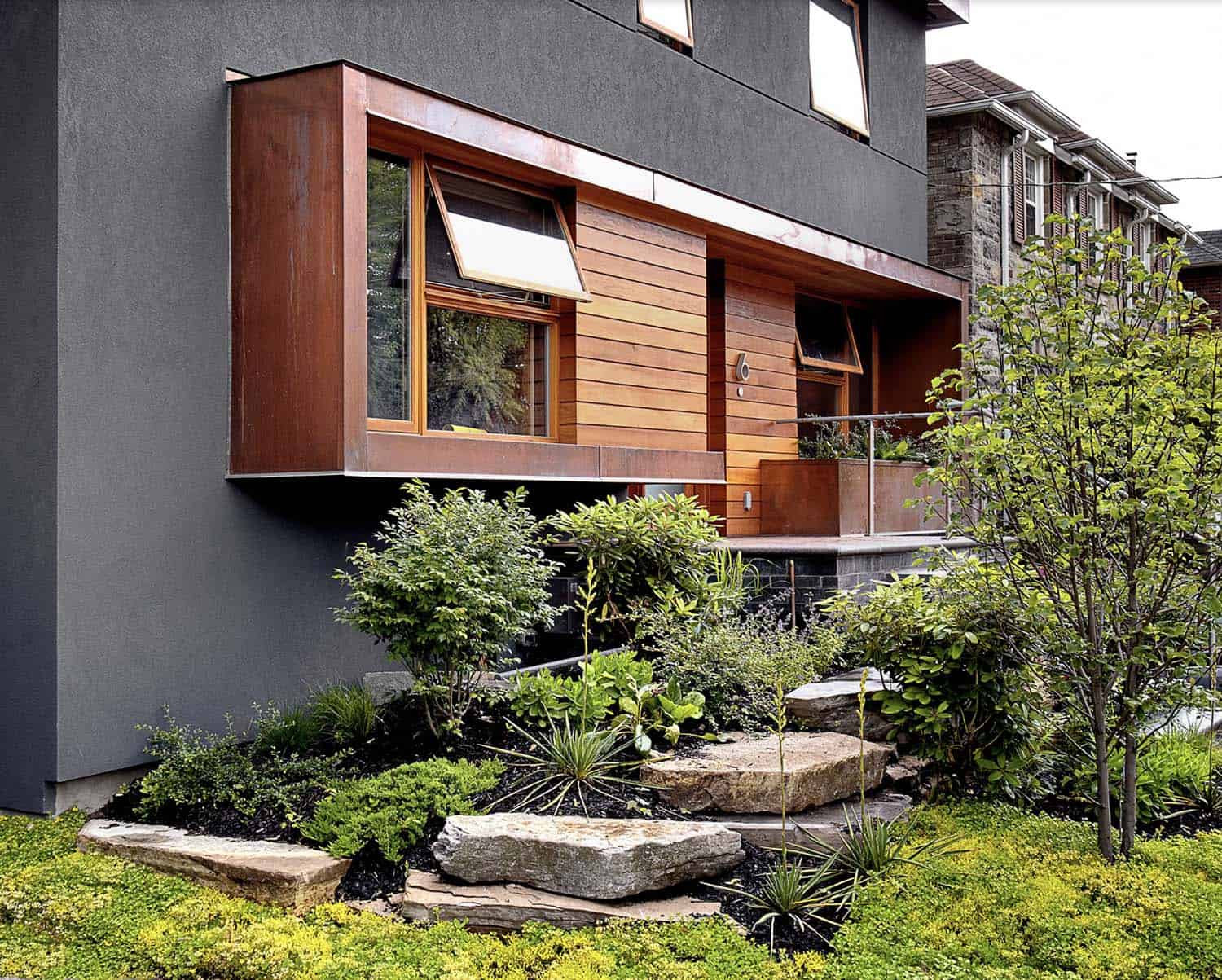
In essence, they simply tried to retain whatever they could to restrain the construction budget whilst trying to deliver a product that the homeowner desired in the most sustainable manner possible.
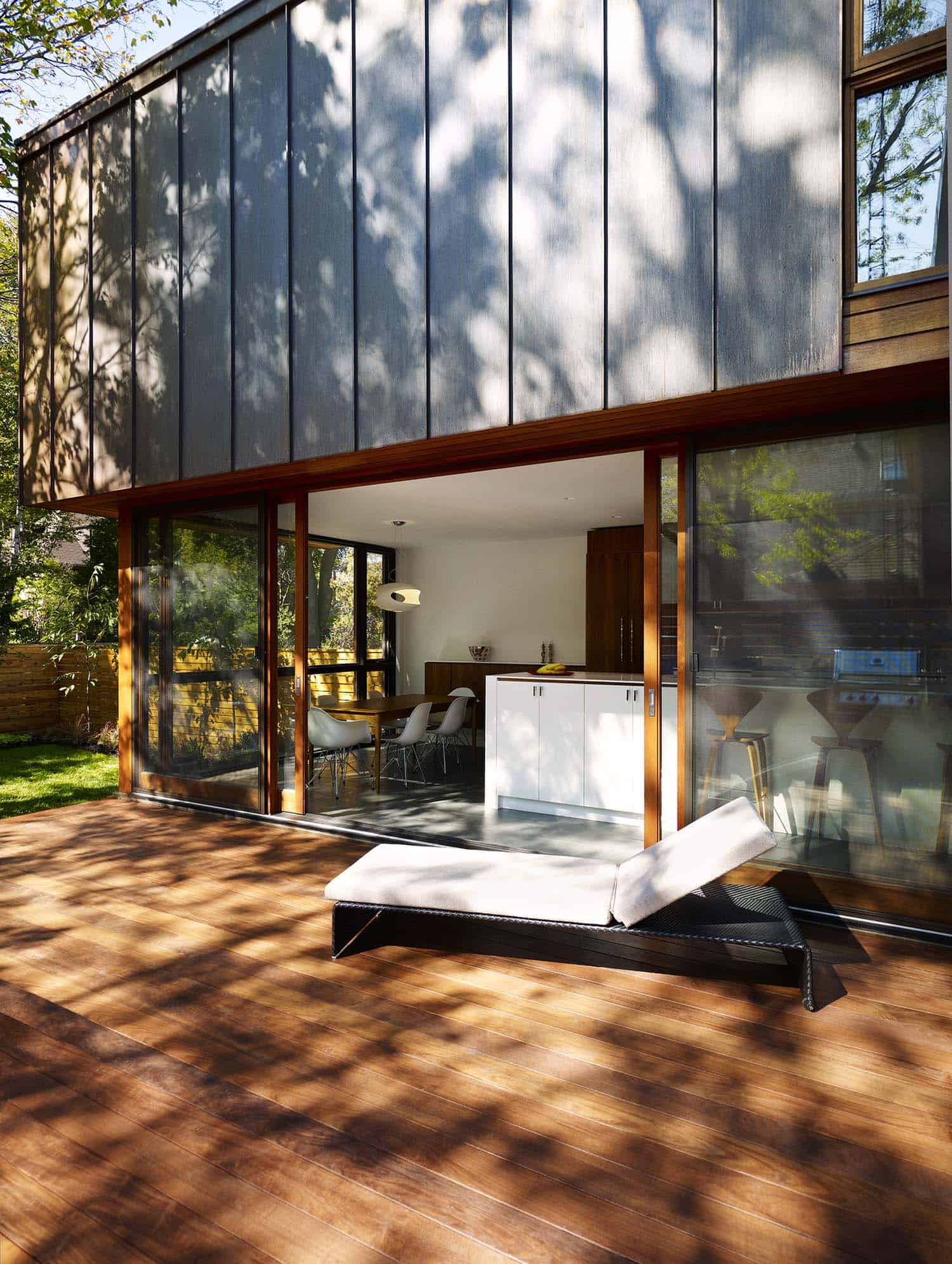
By insulating the house on the outside all of the thermal mass could be utilized to both moderate indoor temperatures and humidity and facilitate a nighttime ventilation strategy that greatly reduces cooling requirements.

Space heating is delivered through a retrofit staple-up radiant heat application to all floors within the existing building, whilst the rear addition makes use of new in-floor radiant heating throughout.
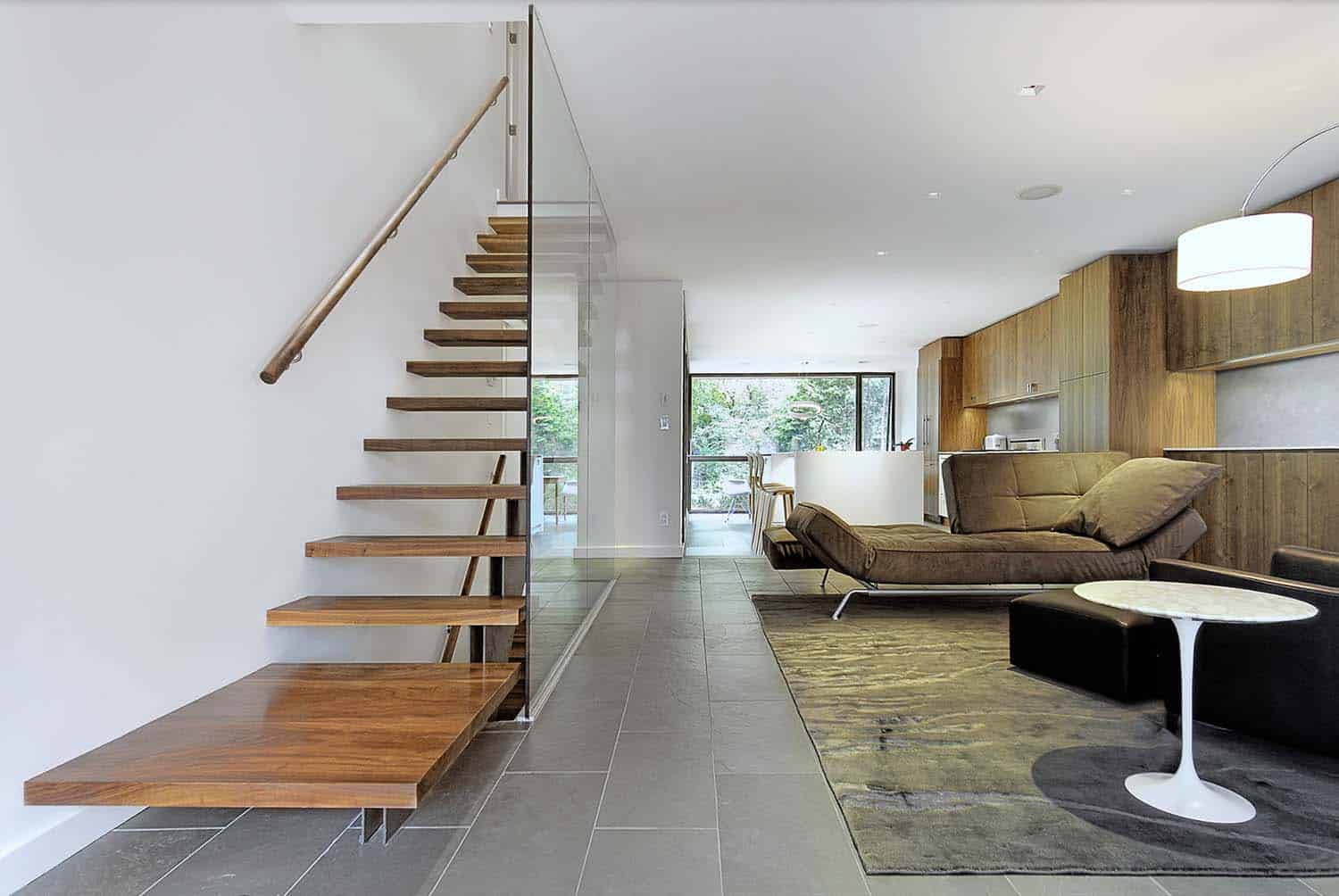
The main living areas to the rear addition maximize passive heat gains through the introduction of larger expanses of glazing to the south facade, whilst at the same time enhancing the overall connectivity between internal and external spaces.

Along with the re-insulation of the existing basement floor slab and the strapping out and re-insulation of all external basement walls heat losses are now minimized.
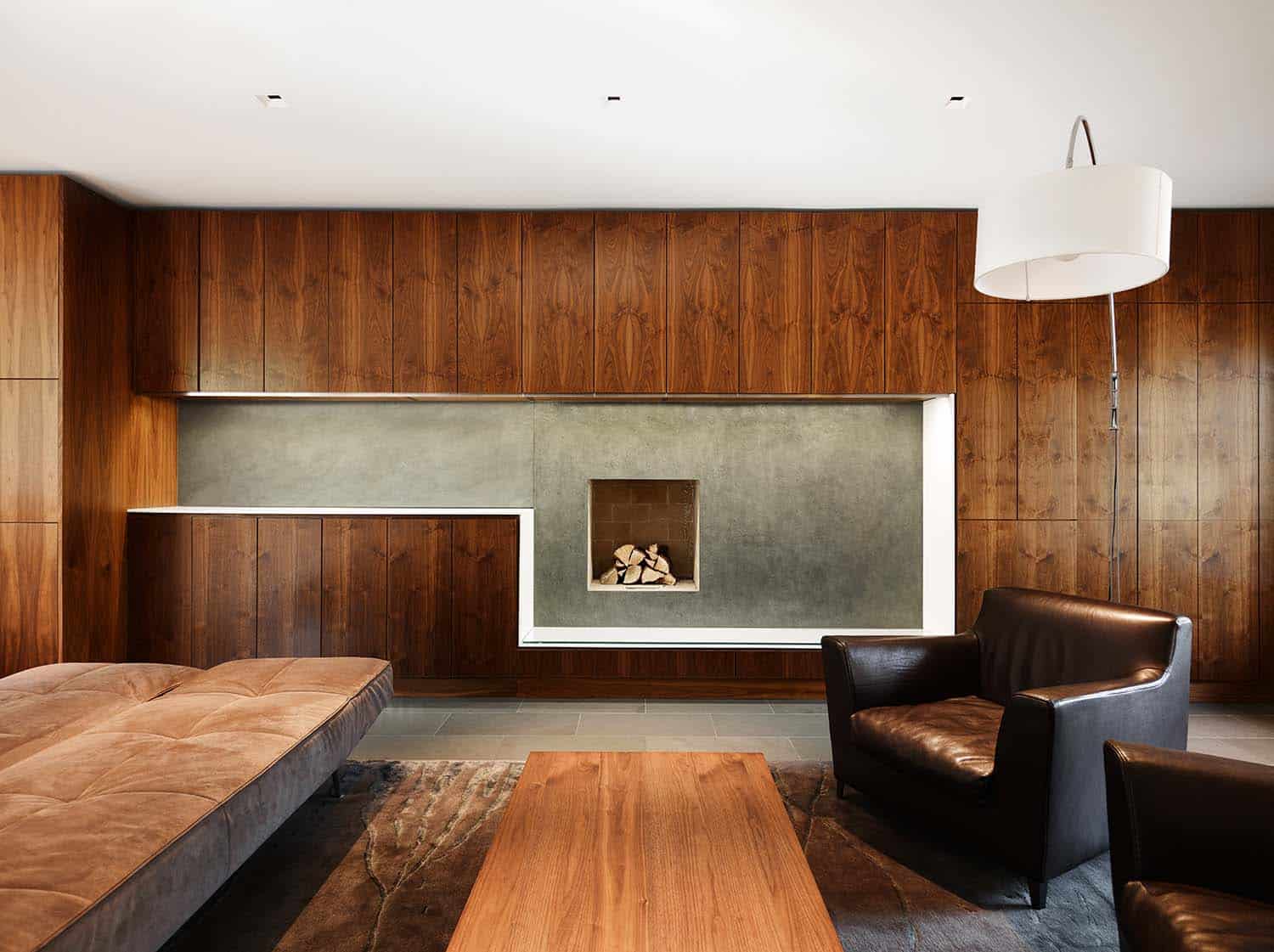
Above: There is an abundance of storage concealed behind the richly detailed cherrywood built-ins around the recessed fireplace.
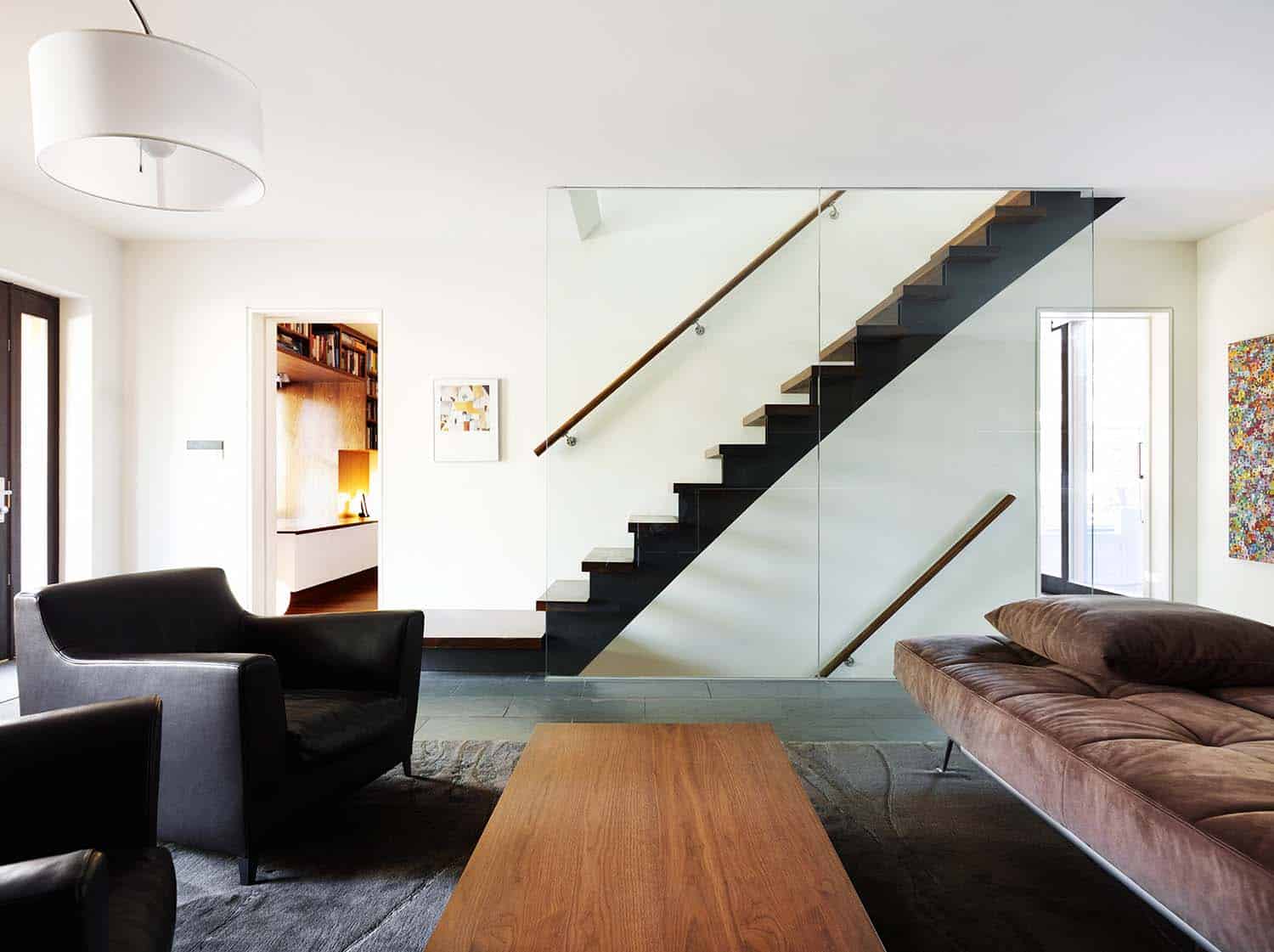
Above: The door on the left leads to the den, while the one on the right brings you into a home office and a bathroom.

Above: The den features a built-in bookcase and a window seat, taking advantage of the bay window at the front of the dwelling.
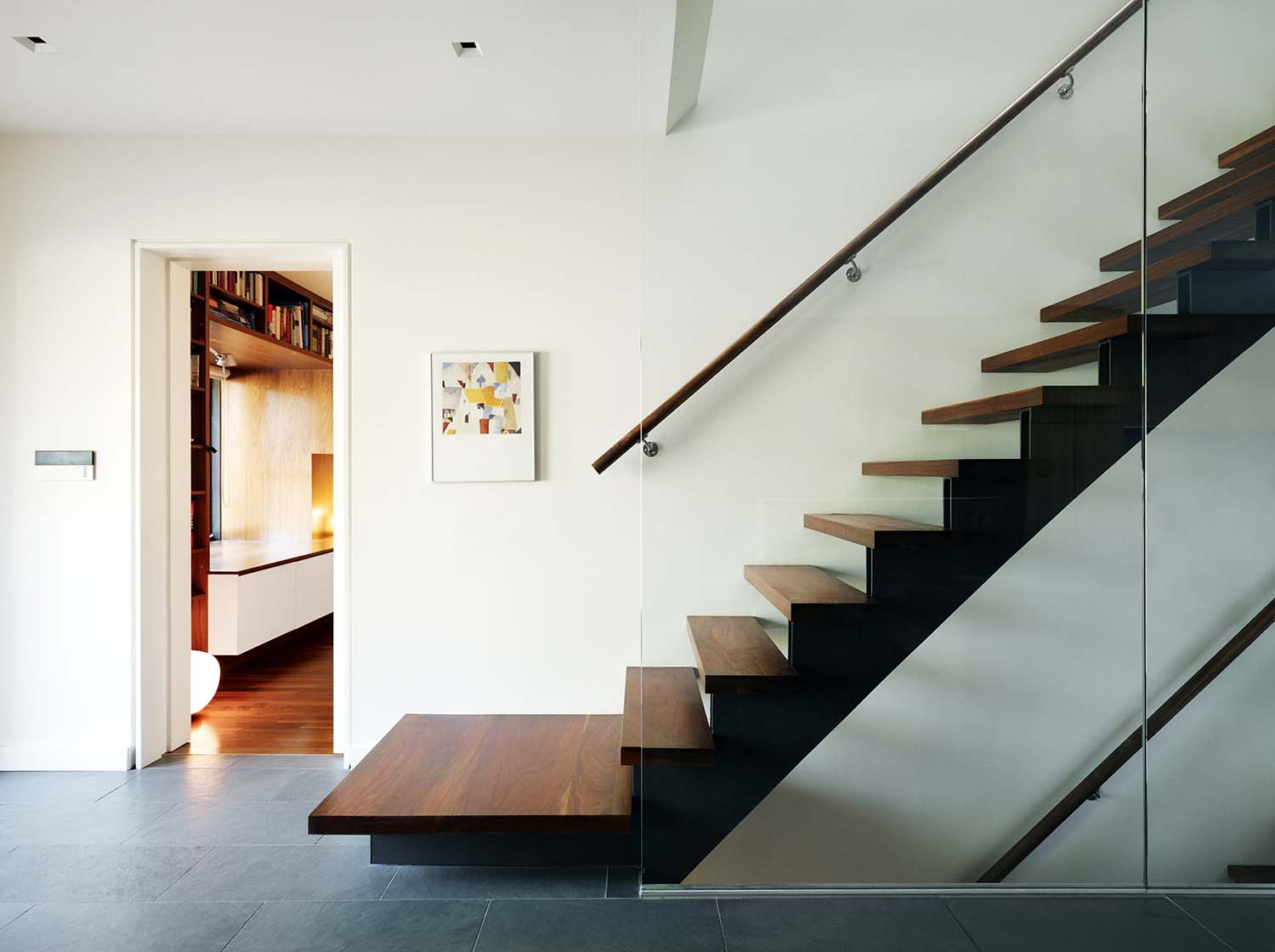
What We Love: This house’s details are stunning. It has a wonderful balance of modern design and traditional materials to bring in some warmth. We especially like the copper and cedar pop-out at the door, which will oxidize to a fun green over time. Overall, the architects did a fabulous job of reimagining this home to meet the lifestyle needs of a family of four while.
Tell Us: Let us know what you think of this house in Toronto in the Comments section below, we love reading your feedback!
Note: Have a look at a couple of other house tours we have featured here on One Kindesign in the Canadian province of Ontario: A warm yet inviting modern lake cottage in Canada used for entertaining and Clean lines define this unbelievable industrial farm house in Canada.




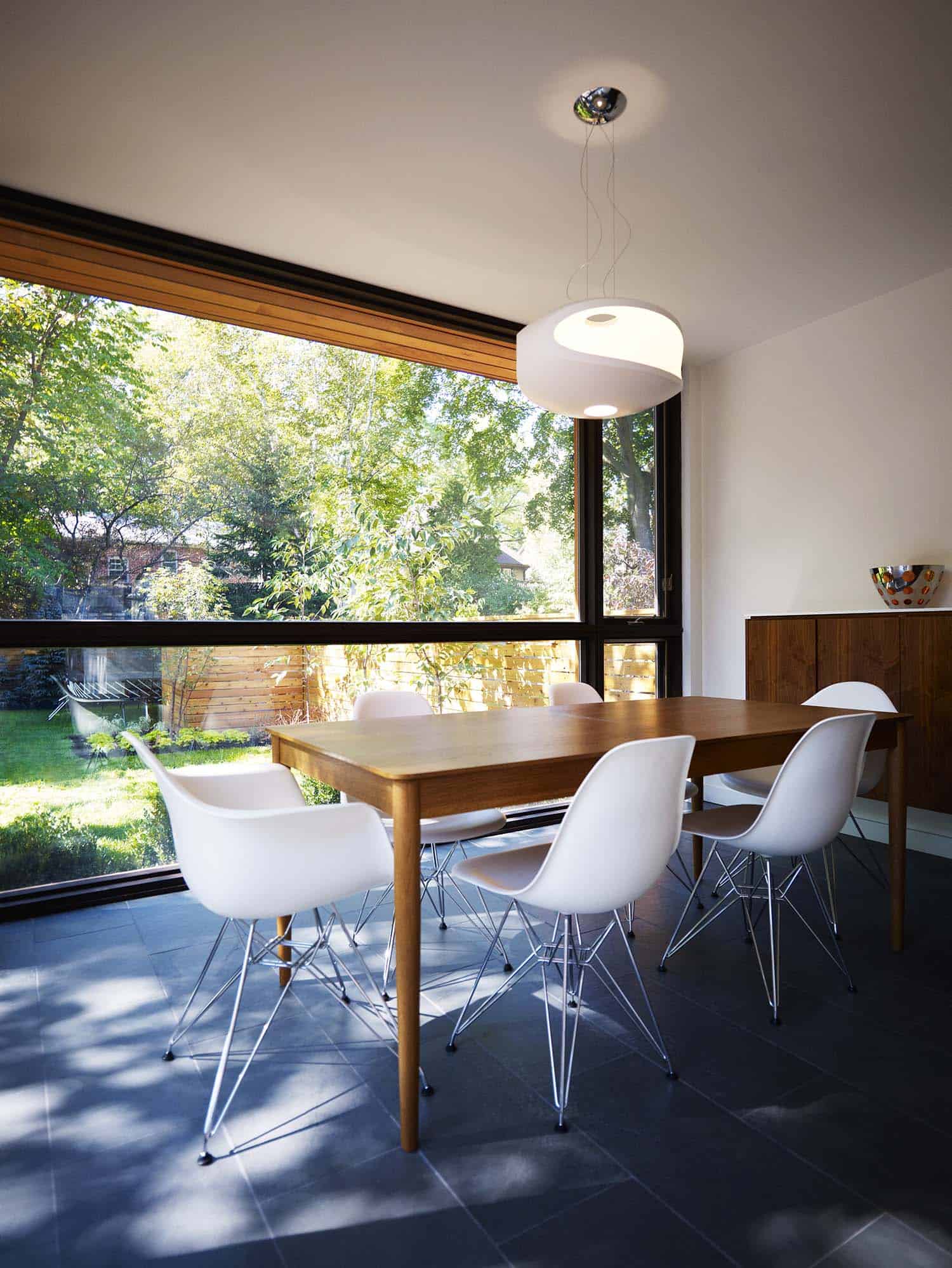

Above: A wall of glass slides away to blur indoor-outdoor boundaries and provide ample space for entertaining during the warmer months. The copper cladding above the glass gives the extension its distinctive appearance.

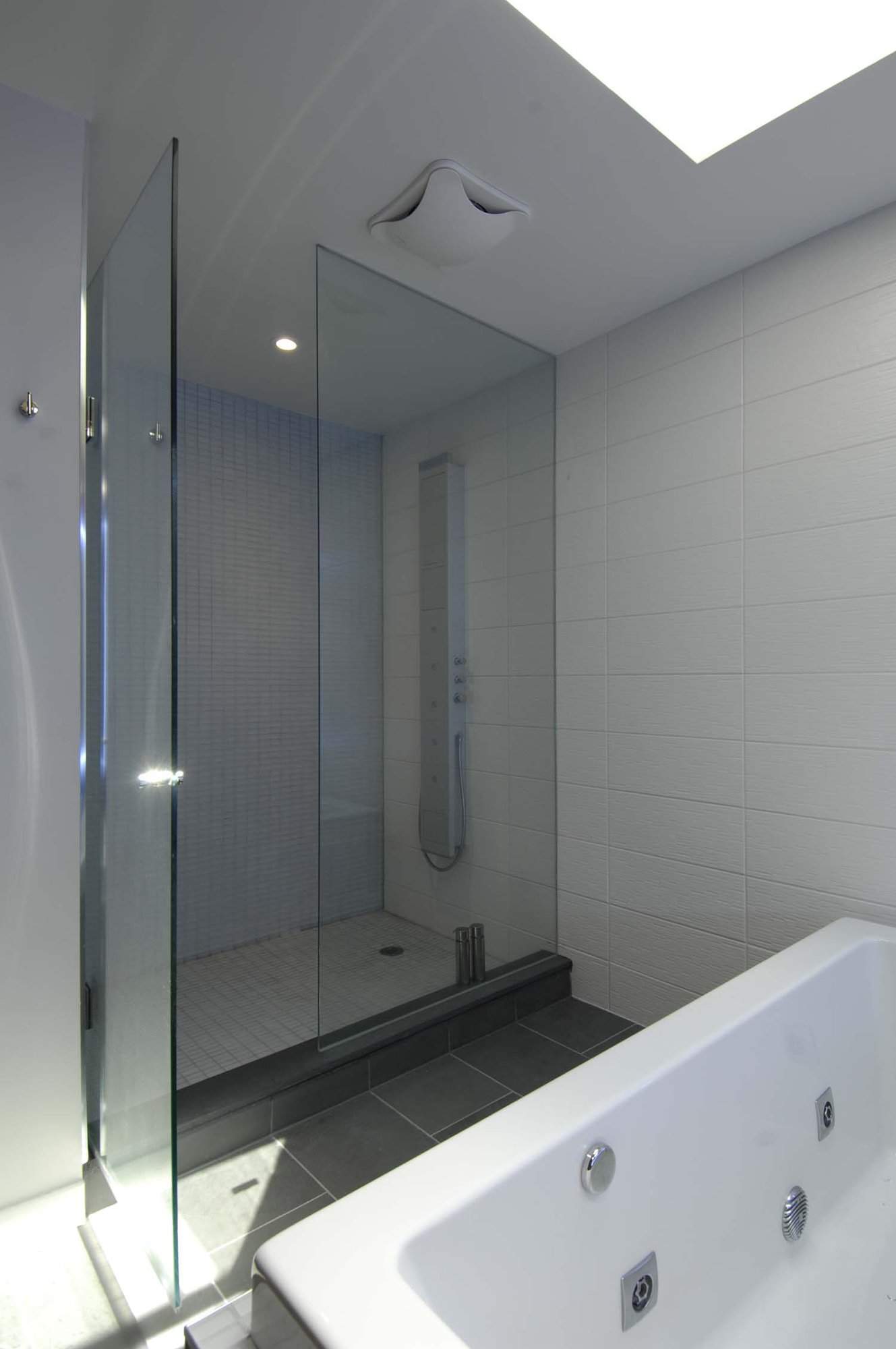

The second story has been designed in such a way as to cantilever past the ground floor along both the south and west facades, this in turn creates a brise-soleil and a means of controlling over-exposure to the sun; eliminating fears of overheating.

Sustainability Features
Program and Spatial Optimization, Passive Solar Heating, Natural Ventilation and Passive Cooling, Natural Daylighting, High-Performance Envelope Design, Reclaimed and Recycled Materials, Indoor Air Quality (IAQ) and Non-toxic Materials and Finishes, Radiant Heating, Heat Recovery Ventilation, Low Energy Lighting & Appliances, Water Conserving Appliances & Fixtures.
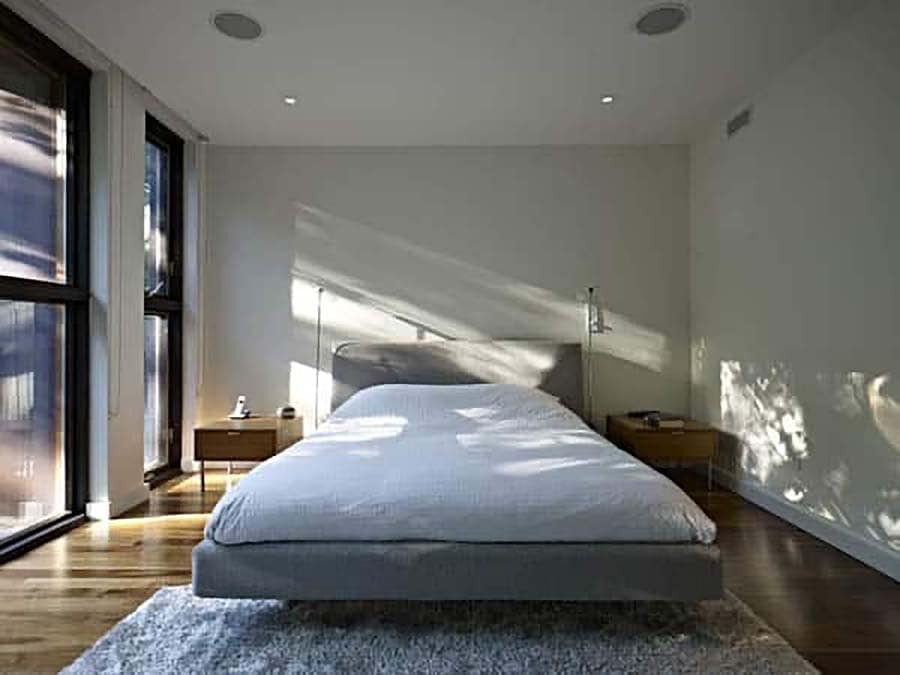
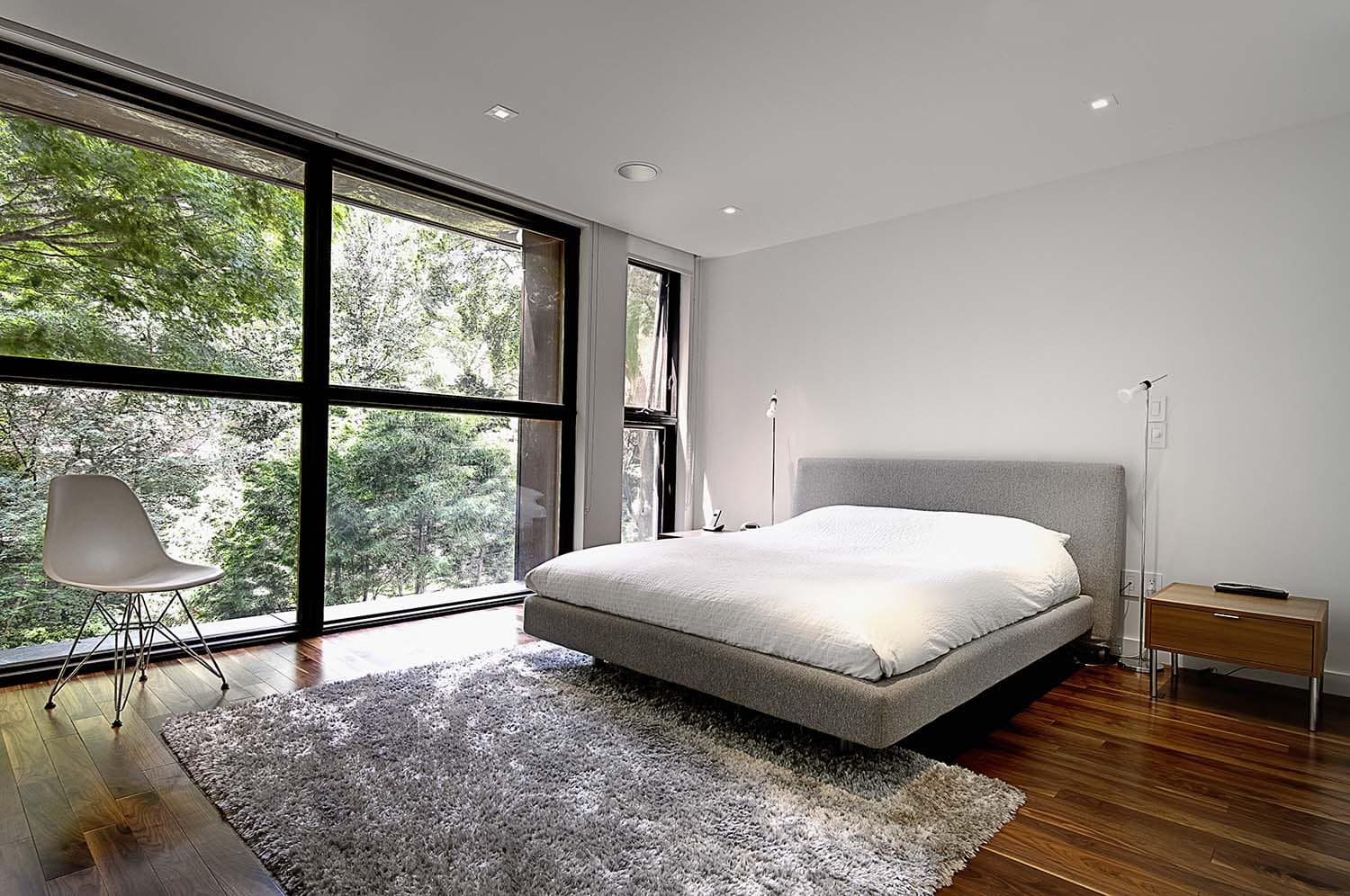

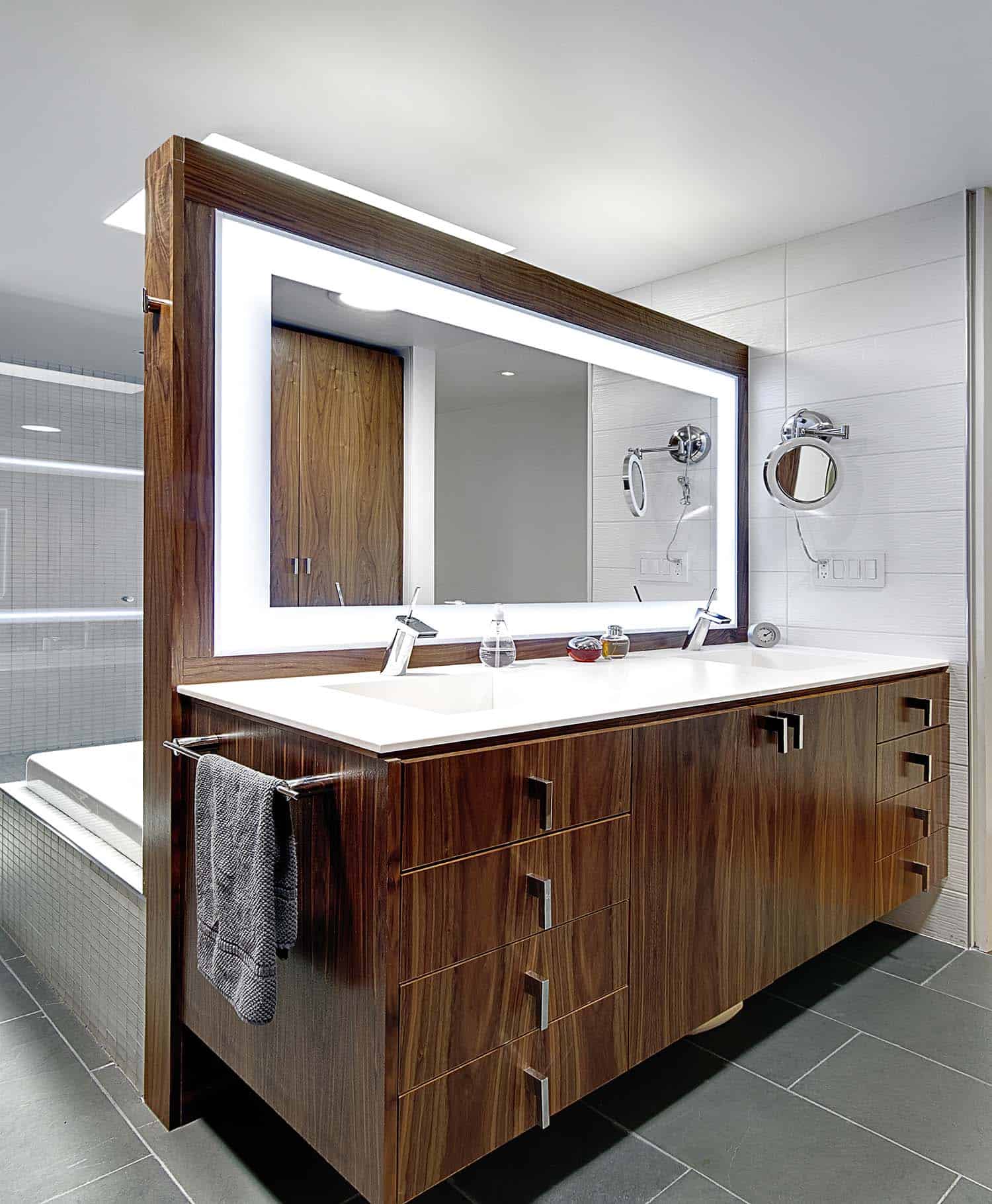

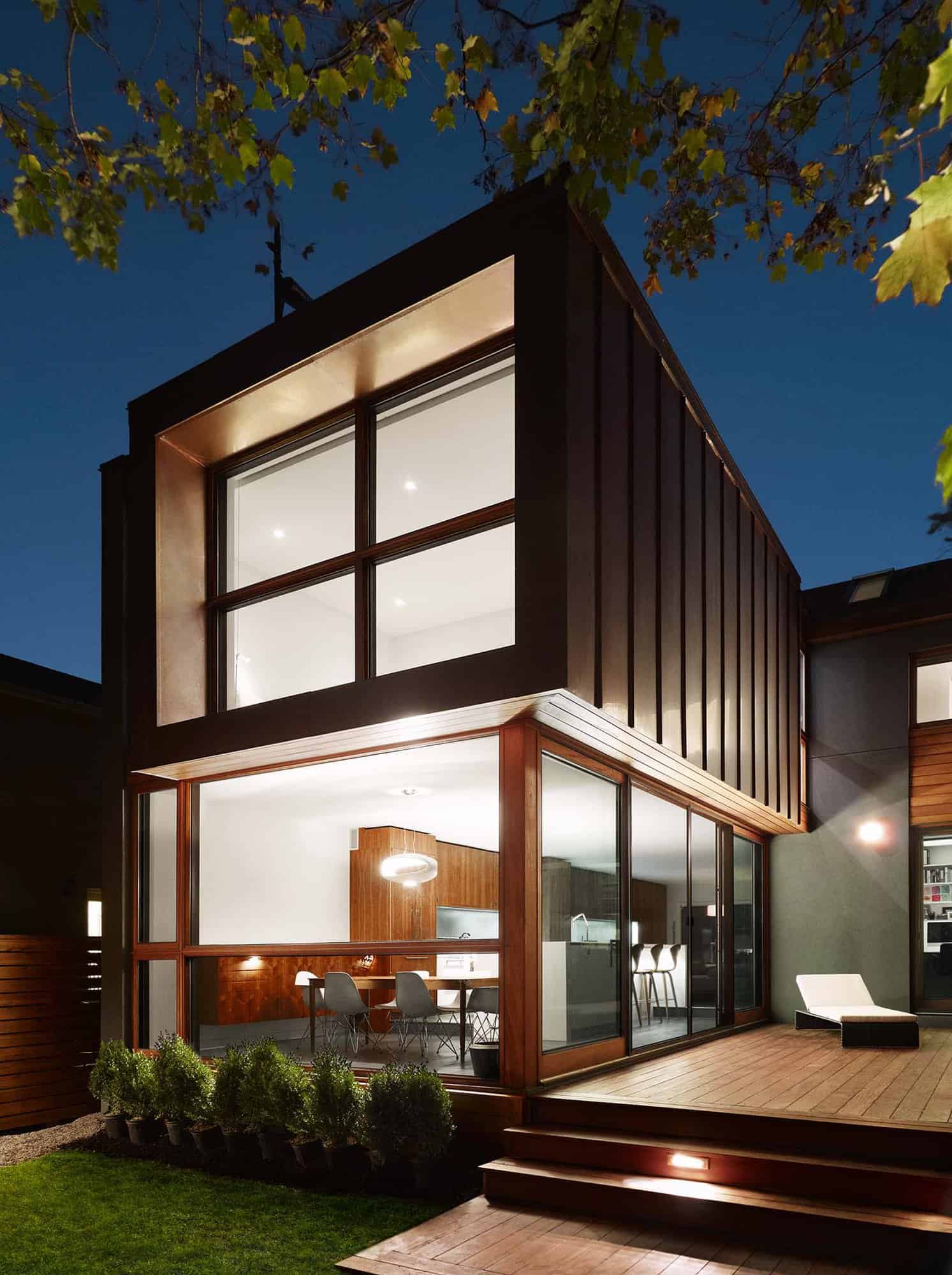
The application of a new external cladding system to all existing facades offers the opportunity to re-insulate all external walls above grade, thus helping to stabilize heating and cooling strategies within the building envelope.

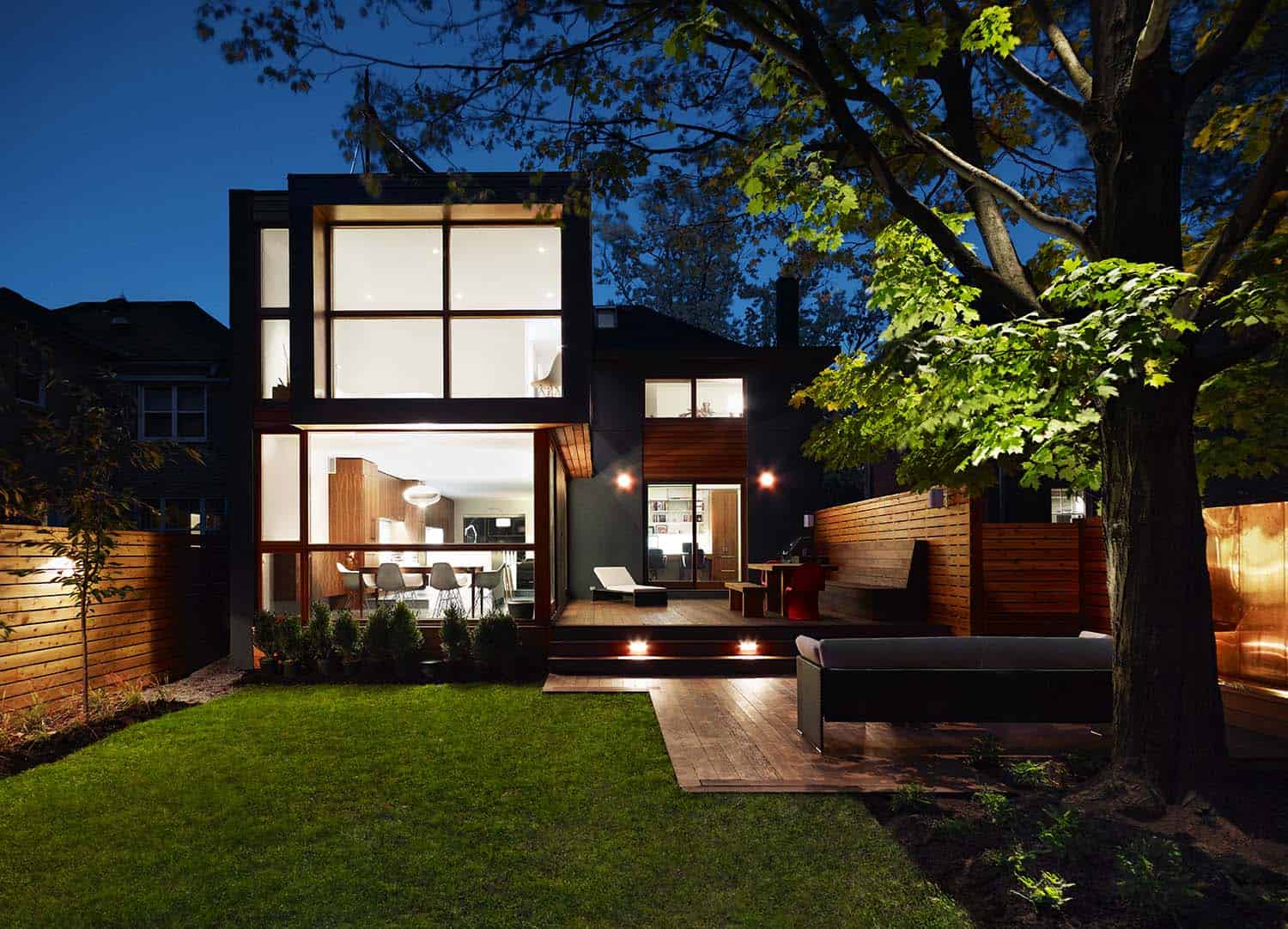

PHOTOGRAPHER Ihor Pona



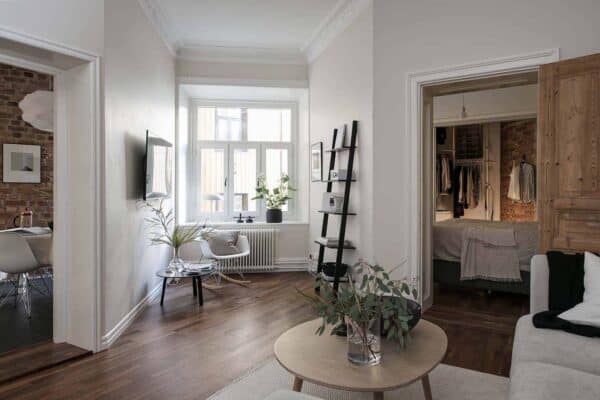

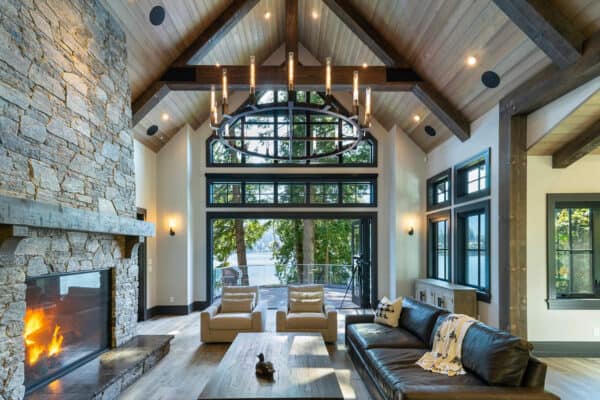
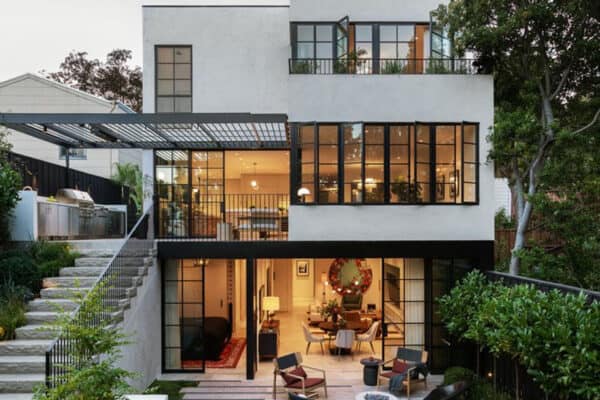
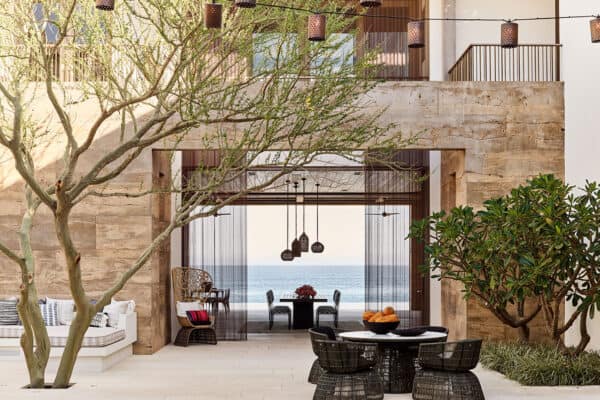

0 comments